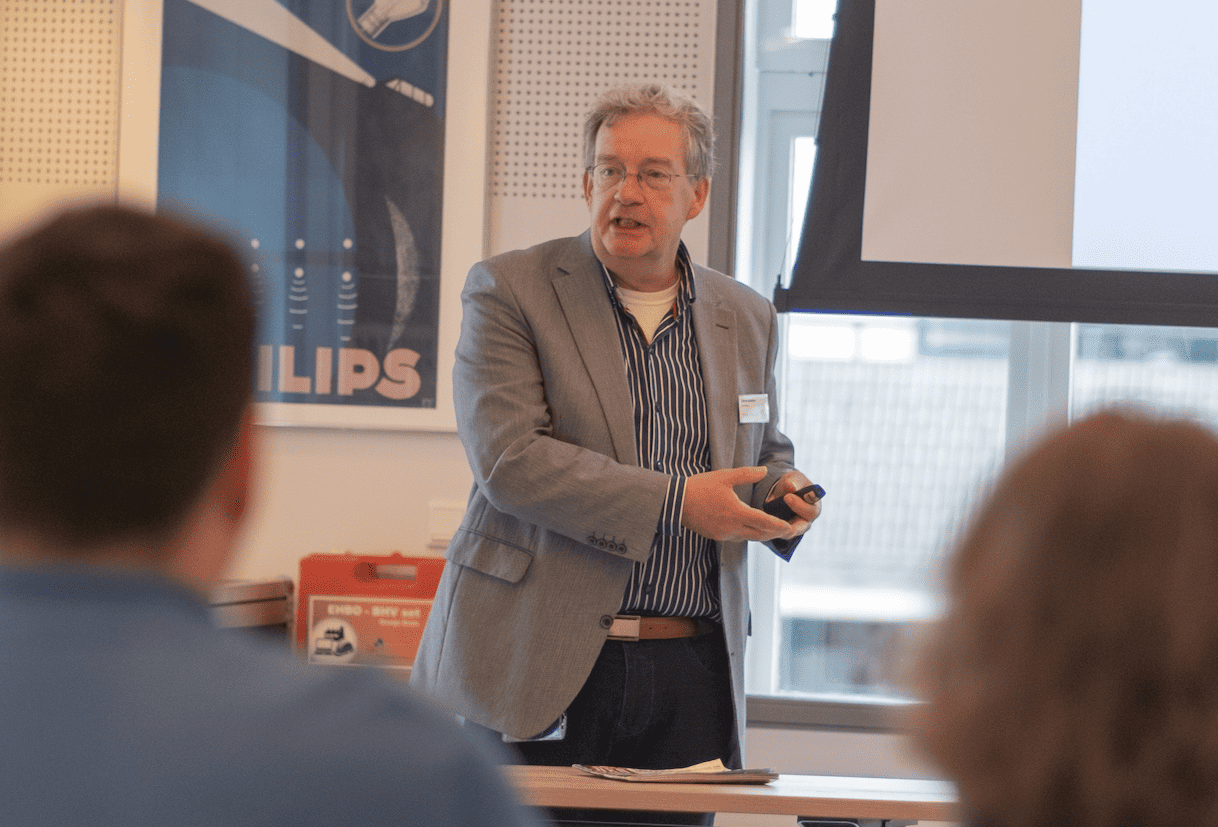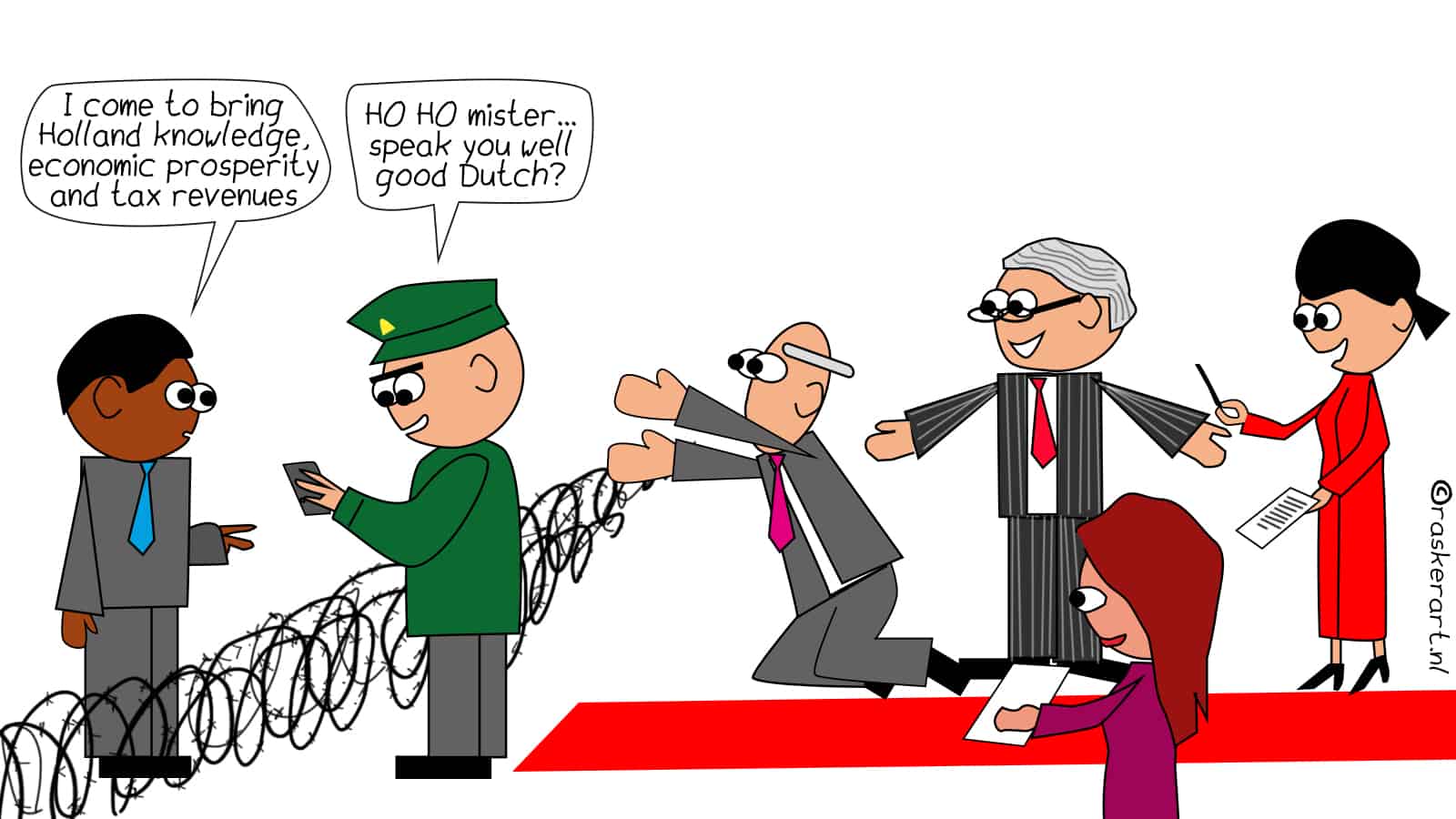
Eindhoven wants to become a smart society. But how does that work? What’s going on in a society like that? Are there any good examples to learn from? DataStudio Eindhoven explores the transition a city has to go through to actually become such a smart society. Each week, we present a new contribution on E52. This week: Looking back on 6 editions of “A City as Smart as its Citizens”. Read all the articles here.
A City As Smart As Its Citizens is a series of six readings with discussions about best practices for the smart society. The sixth and so also the last episode took place on June 22nd in the library of Eindhoven. Speaker was Priya Prakash: an innovative social entrepreneur from London.
Now that the whole series is finished, it is time to draw up the balance sheet. What can you concretely say about how a smart society should be designed? What are the best practices? And what can Eindhoven still learn about that?
The idea of the smart society is a combination of two concepts which, not so long ago, had little to do with each other. On the one hand we had the future dream of the by technology driven smart city: efficient, safe, clean, energy-efficient, circular and green, all with the help of sensors, huge amounts of data and algorithms that can obtain all important patterns and information from there and that continuously tune in all systems exactly to the current need.
In addition, we had the desired image of the participation society, the successor of the welfare state. The idea of that was, mainly in care and in the social domain, for the government to retreat and for the citizen himself to be asked and stimulated to organize himself: to provide mantle care, to do groceries for the neighbour or to run the sports club. In general: to care for his or her environment.
A smart society should combine the best elements from these aspirations. The DATAstudio formulated it as follows: in a smart society, technology helps citizens to connect with each other, with their environment and with (the services of) the urban government.
“In the smart society there is space for a lot of different approaches for communication between government and citizen (and companies) around urban questions”,

How does a smart society work?
If the insights from the readings of Marcel Schouwenaar, Maurits Martijn, Jaromil, Linnet Taylor, Dietmar Ofenhuber and Priya Prakash – the six speakers in A City As Smart As Its Citizens – get combined, we will get something like the following image:
The citizen central
In the smart city the central question was “What can digital technology mean for the city?” Technology was serving the efficiency of the organization of the city. In the smart society the needs of the citizen are central and technology helps the citizen.
Accessible technology
For the smart society we looked at the large scaled implementation of new technology, designed by multinationals such as IBM, Siemens and ATOS. In the smart society we establish that the technology (smart phones, RFID, Bluetooth, Wifi, LoRa) is now available everywhere, and that a better question is how (and how not) to use it.
Where in the smart city one solution (data processing digital technology) was the answer to all identified and unidentified urban issues, in the smart society there is space for a lot of different approaches for communication between government and citizen (and companies) around urban questions. After all, groups of citizens differ from each other in technical literacy, in life needs and in interest in thinking or making decisions about processes in the city.
In other words: systems have to be able to handle e-mail, chat, telephone but also handwritten postcards of less digitally literates.
Decentralised systems
The smart city was about large scaled centralised infrastructural systems. In the smart society technology helps with the decentralisation of infrastructure: individual households can for example generate energy and supply it to the net. Efficiency questions remain, also in the smart society (think about waste disposal for example), but not all urban questions are interpreted as efficiency questions: quality of life is a much more subjective sort of experience than the cheapest possible waste recycling
The smart city and the welfare state were stories around big master plans of the government in collaboration with large companies or other organisations. In the smart society there are master plans for a limited number of questions and for the rest, the government is an improvising spider in the web. Sometimes directing, sometimes facilitating, sometimes protective, sometimes regulating, in continuous interaction with a large network of large and small companies, citizen initiatives, NGO’s and new technical possibilities.
Self-organising citizens
In the welfare state and in the smart city, citizens were read out by complex devices and they were taken care of based on the data thus obtained by inscrutable technology. In the smart society, citizens have more and easier resources to organise themselves than ever before. In the smart society, citizens insist on transparency of data streams. They are seen as (amateur) experts on every issue that touches them: whether it’s about a broken road, too few used football fields or lonely people in the neighbourhood.
In the welfare state, the government organised everything for the citizen, in the smart society the government helps the citizen to organise himself. In the welfare state you were either healthy, or you were in the care system. In the smart society there are more steps in between, with more or less input of professionals and the citizens’ own networks. Technology can help people to live independently at home longer and it can help people to remain self-sufficient at a higher age.
Ethical data use
In the smart city, the government provided data to large companies in exchange for efficient and cheap services. In the smart society, the government guards the public values with new developments. Data generated in the city is public property and everyone can develop services around it. Personal privacy is a fundamental right, cornerstone of the democracy and the government helps citizens to protect their privacy.
In the smart society, the government stimulates ethical data practices at all parties it works with. Either by enforcing ethical practices as a big client or administrator of a lot of hardware in the city, or by promoting (legal) regulation.
Joint design
With designing services or technologies that should play a part in the public atmosphere or the smart society, the government ensures that they don’t exclude anyone, that they are always designed with their users and never just for the users, that they are designed in a way that citizens can understand their operation, that they are never forced but always offered opt-in.
There isn’t one city in the world where all these principles are actually implemented in the developments. But in Eindhoven they are certainly recognised and they are trying to seriously apply them.
Is Eindhoven already a smart society? Probably not.
Is Eindhoven on the way to becoming a smarter society? Definitely.







